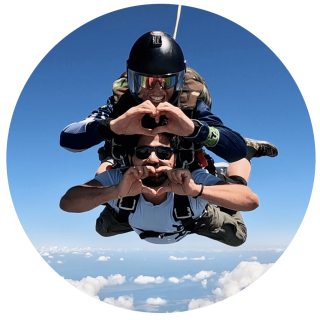How Do Skydivers Know Where to Land?
DZ News
Posted by: Parachute Ottawa
2 months ago
You’ve been dreaming about skydiving, anticipating the thrill of freefall. But as you think things through, some practical questions start popping up:
- How do skydivers know where they are going to land?
- Do we land at the same place we take off from?
- Will my friends and family be able to see me land?
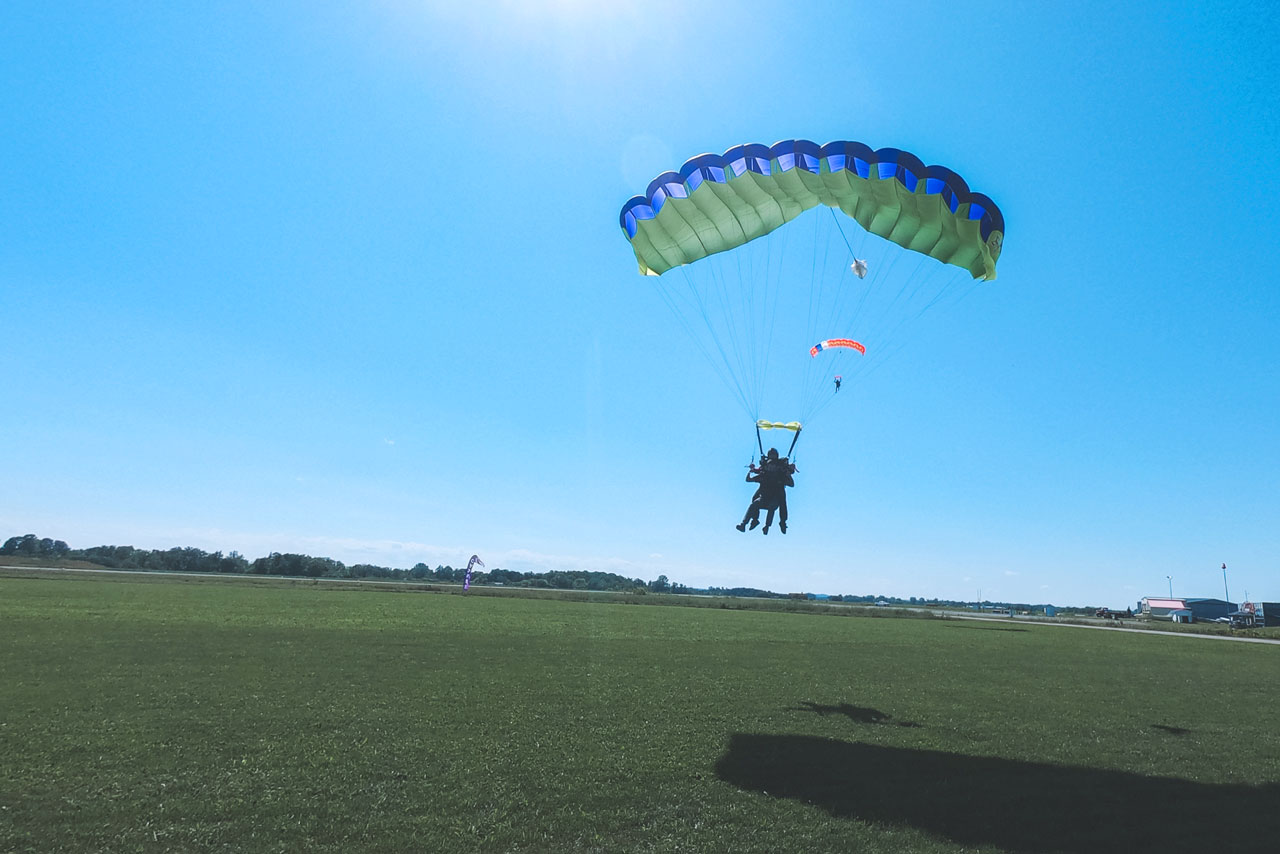
Great questions! The good news? Skydive landings rarely happen outside the planned landing zone. Skydiving operations have several systems in place to ensure you land where you’re supposed to. In this article, we’ll discuss how it all works.
Proper Planning Leads to Precision Landings
Landing accurately starts long before anyone jumps out of a plane. A solid ground plan means fewer adjustments will be needed in the air. Every skydive follows a carefully designed process to help ensure everyone lands in the designated area.
The Dropzone: Predetermined Landing Areas
Unlike hot air balloon jumps, where landing locations can be unpredictable, skydiving landings take place at designated dropzones with pre-determined landing areas. In fact, the Canadian Sport Parachuting Association (CSPA) sets guidelines to ensure landing zones are appropriately sized and free of hazards. Having a dedicated landing area means that both pilots and instructors work together to bring skydivers down exactly where they need to be.
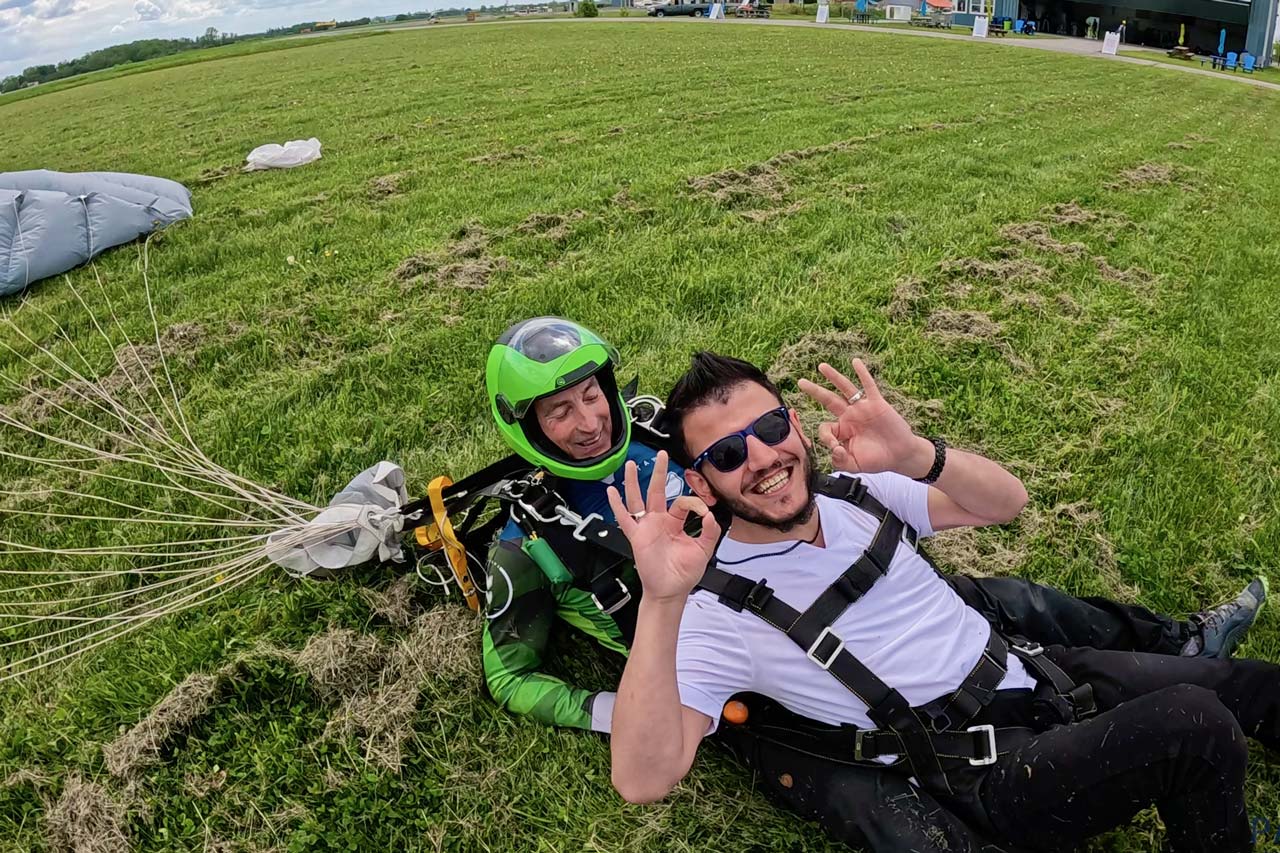
Winds Aloft & Coordinates: Understanding the Conditions
We continuously monitor weather forecasts and wind conditions throughout the day. This includes assessing the winds aloft – wind patterns at different altitudes – such as:
- Exit altitude – Where you leave the plane
- Opening altitude – Where you open the parachute
- Canopy flight altitude – Where you descend under the parachute
- Landing altitude – Where you touch down
For example, if winds at canopy flight altitude are strong and blowing toward the landing area, the plane can drop skydivers further upwind, allowing them to glide back to the target with ease.
If the winds are working against them, the aircraft will adjust its jump run to compensate and jumpers will fly an appropriate canopy pattern to avoid drifting too far downwind of the landing zone.
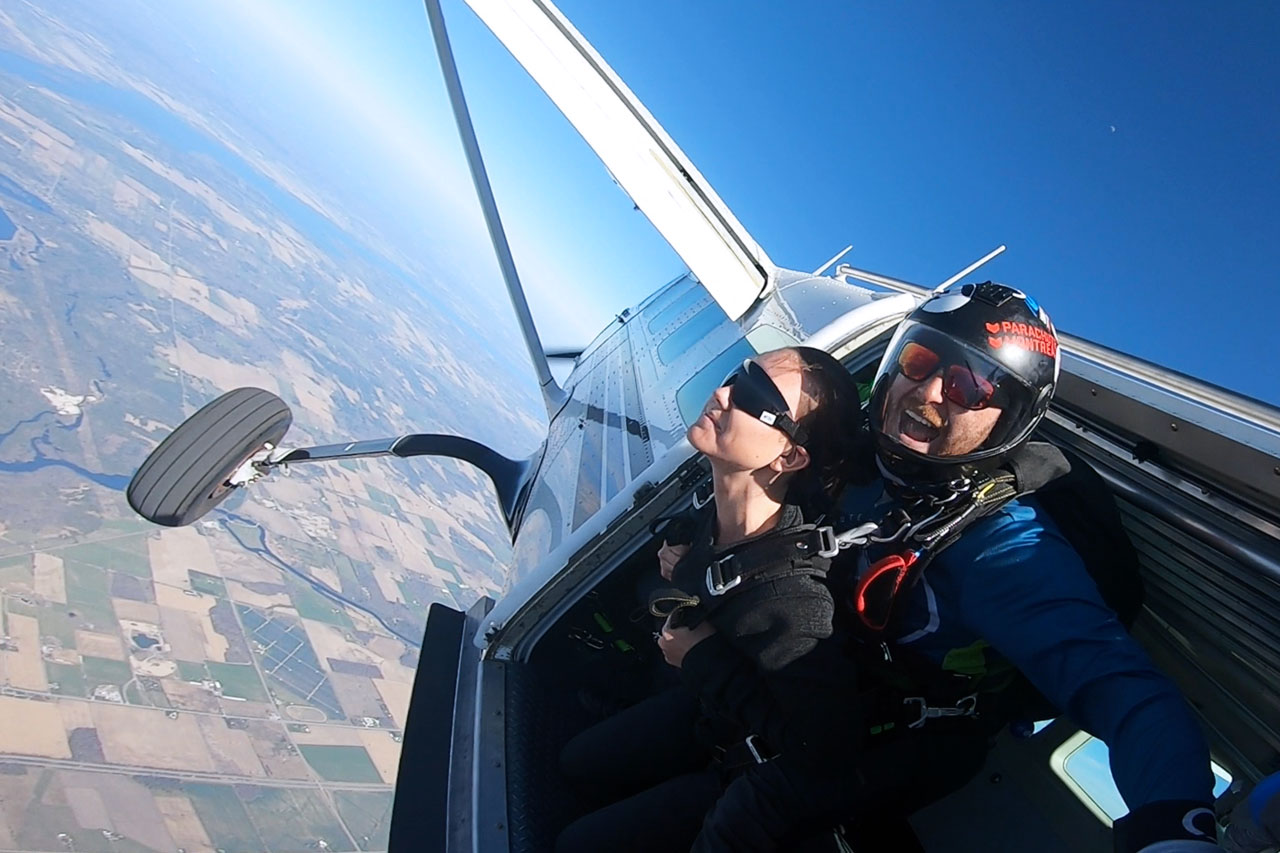
Spotting: The Art of Exit Location
Pilots use both visual cues and aircraft instruments to help determine when they are in the right location for the drop. This is an artform! They must make sure they are going the right speed, flying at the right altitude, and in the predetermined “spot” all at the same time – and do it in a timely manner!
Before exiting the aircraft, tandem skydive instructors visually check the “spot” to ensure it’s good. (Don’t stress if you’re considering going through the solo program – we’ll teach you how to do this assessment yourself!)
If the spot isn’t quite right, the instructor or solo jumper can request a “go around” before jumping. This ensures that skydivers are set up for a successful canopy flight to the landing area.
Modern Parachutes: Steering with Precision
Forget the old Hollywood idea of parachutes being plumes of fabric floating haphazardly across the sky! Today’s square (ram-air) parachutes are highly maneuverable. Jumpers can steer with precision, making landing accuracy not just possible but expected.
Ram-air parachutes allow the jumper to control:
- Direction – Using toggles to turn left or right
- Speed – By adjusting how much they flare (pull down on the toggles)
- Descent rate – By manipulating their glide path
This means instructors don’t just pull their parachute and hope for the best – they fly them with purpose, ensuring a smooth and accurate landing. So much so, in fact, that today’s parachutists are called canopy pilots.
Making Adjustments in the Air
While pre-jump weather checks are thorough, conditions can shift unexpectedly. Our instructors are highly trained professionals who constantly assess their altitude and position.
If the spot is farther away than expected, they can deploy the parachute higher, allowing more time to adjust course. And in the rare event that they need to land outside of the designated area, instructors and solo jumpers are trained to find an alternative landing spot by assessing the wind direction and terrain in real time.
Tandem Skydiving: How to Land
As you approach the landing zone under the parachute, your instructor will guide the descent to set up for an easy-peasy touchdown.
Most tandem skydive landings end with a gentle slide-in landing. In some cases, if conditions allow, you might land on your feet. The only tandem skydiving landing tips you need to keep in mind are to lift your legs at the hip as you approach the ground and to listen to your instructor.
This “legs-up” position is crucial because it prevents your feet from touching down too soon, which could cause you to trip or stumble right into an injury. Think of it like going down a slide sitting up – your knees should be up, and your feet extended out in front of you.
No matter the approach, your instructor is in full control and will give you clear instructions on what to do before you land.
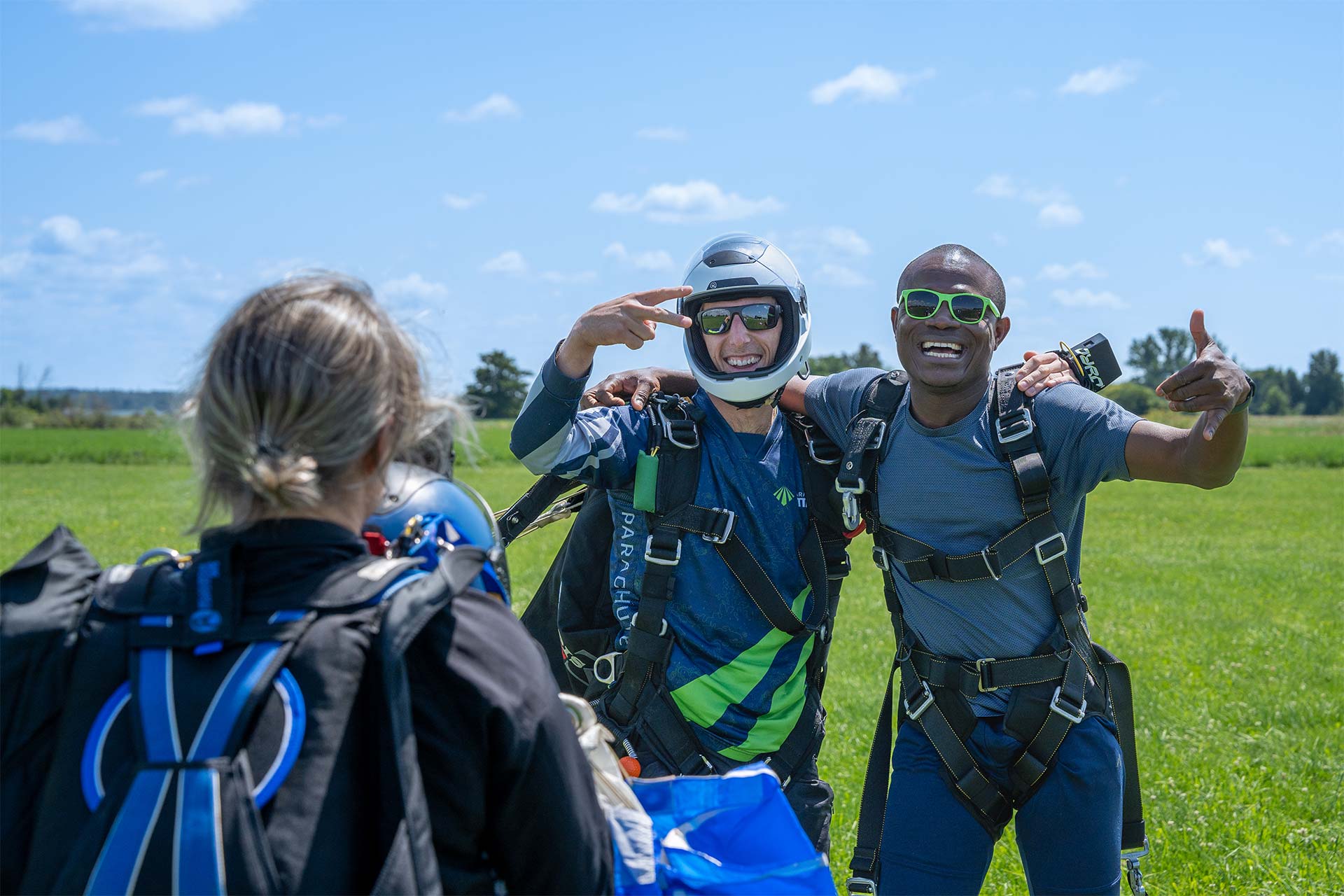
Can Friends and Family Watch You Land?
Where do you land when you skydive? From the same place where you took off from! The friends and family who waved you off will have a front-row seat to your landing without having to change locations. They’ll be able to see you touch down, cheer you on, and capture photos or videos of your incredible achievement.
And who knows? Watching you might just inspire them to join in and take the leap too!
Skydiving Landings are Carefully Planned
So, how do skydivers know where to land? It’s all about preparation, training, and in-air adaptability. With the combination of experienced pilots, knowledgeable instructors, and maneuverable parachutes, skydivers don’t just “hope” to land in the right place – they plan for it.
Rest assured, when you go for your tandem skydive, every precaution is taken to make sure you land exactly where you’re supposed to, ready to celebrate your life-changing jump!
Haven’t booked yet? What are you waiting for? Book your tandem skydive today. We can’t wait to jump with you!
Categories:
You May Be Interested In:
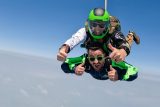
Skydiving Age Limit: How Old Do You Have to Be to Go Skydiving?
3 weeks ago by Thu Thi
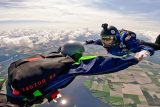
Understanding the Skydiving Student Program Pathway
2 months ago by Parachute Ottawa
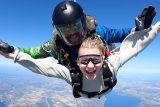
Skydiving Anxiety and How You Can Prepare
4 months ago by Parachute Ottawa
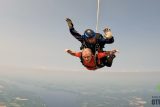
PO Feature: Skydiving is for All Abilities
4 months ago by Parachute Ottawa
